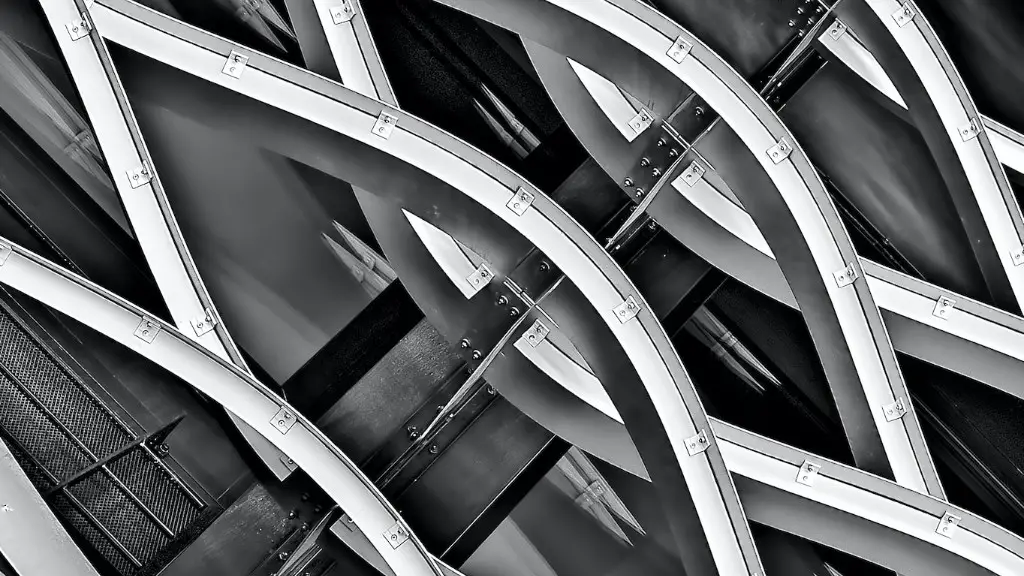Wayfinding in architecture is the process of creating a system that helps people navigate their way through a built environment. This can be done through the use of signage, floor plans, and other visual cues that help people to orient themselves and find their way to their destination.
Wayfinding in architecture is the process of designing cues into the built environment that help people orient themselves and find their way around. This can be done through the use of signage, lighting, color, and other visual cues.
What does wayfinding mean?
Wayfinding can be a helpful tool in orienting yourself in an unfamiliar space or in finding your way to a specific destination. Good wayfinding systems should be intuitive and easy to use, providing clear and concise information that can be easily understood. When used effectively, wayfinding can enhance your experience of a space and help you to navigate it more effectively.
Wayfinding is a term used to describe the process of orienting oneself and navigating from one place to another. There are five core principles of wayfinding that should be followed in order to create an effective wayfinding system:
1. Create an identity at each location: This means creating a unique and recognizable identity for each location that is being navigated to. This can be done through the use of signage, color, and other visual cues.
2. Use landmarks to provide orientation cues: Landmarks can be used to help orient the user and provide cues as to where they need to go.
3. Create well-structured paths: Paths should be clear and easy to follow. They should also be clearly marked so that the user knows where they need to go.
4. Create regions of differing visual character: This helps to create visual interest and variety, and can also help to orient the user.
5. Don’t give the user too many navigational choices: Too many choices can be confusing and overwhelming. Instead, focus on providing a few clear and concise options.
What is wayfinding and why is it important
Healthcare complexes and educational campuses can be difficult to navigate, especially for first-time visitors. Wayfinding is the use of signage, color, and other design elements to help occupants find their way around these types of spaces. By careful planning and design, wayfinding can make these complex spaces much easier to navigate and help reduce stress and anxiety for occupants.
Wayfinding signage is a key part of any facility, whether it’s a hospital, office building, or shopping center. It helps visitors and employees navigate their way around, and can be a lifesaver in an emergency. There are many different types of wayfinding signage, each with its own purpose. Here are some examples:
Floor plans: Floor plans are useful for getting an overview of a facility. They can be found in the lobby or near the elevators of most buildings.
Area maps: Area maps are helpful for orienting yourself within a larger facility. They can be found in the lobby or near the elevators of most buildings.
Building directories: Building directories list the businesses and organizations located within a facility. They can be found in the lobby or near the elevators of most buildings.
Street signs: Street signs help people find their way around a city or town. They can be found on street corners and near major intersections.
Directional signs: Directional signs provide guidance to specific locations within a facility. They can be found throughout a building, leading the way to restrooms, exits, and other important places.
What is the goal of wayfinding?
There are a few key things that wayfinding signage needs to do in order to be effective. First, it needs to help people make the correct decisions about where to go. It should be clear and concise, providing people with the information they need to make a decision. Second, it should confirm that people are on the right path. This can be done through visual cues or through providing directions. Third, it should help people choose a route to take at an intersection. This means clearly indicating which way to go and providing any necessary information about the route. Finally, it should tell people to stop and identify their location before continuing. This is especially important in large or confusing spaces. By following these guidelines, wayfinding signage can be an effective tool for helping people navigate their way.
Wayfinding can be a difficult process, especially if you are in an unfamiliar setting. There are a few things you can do to make the process easier. First, pay attention to your surroundings and look for cues that can help you find your way. Second, try to relax and stay calm. Wayfinding can be stressful, but if you stay calm it will be easier to think clearly and find your way. Finally, if you are still having trouble, don’t be afraid to ask for help. Asking for directions can be difficult, but it is often the best way to find your way.
What are architectural wayfinding elements?
The main architectural wayfinding elements include:
Zones: areas characterised by a particular feature or function and given a unique identity
Paths/ circulation: distinct areas for movement to and from destinations
Landmarks or markers: objects/ elements used to indicate a position / area along a route or at a .
Wayfinding is one of the most important aspects of design, yet it is often overlooked. Wayfinding design is all about creating clear and intuitive paths that help people navigate through a space. Good wayfinding design is essential in reducing stress and increasing efficiency.
What are the elements of wayfinding
The principles of wayfinding are important for designers to understand when creating spaces that will be easy for people to navigate. These seven concepts can help create a space that is easy to understand and move through.
The first step to successfully develop an effective wayfinding system is to develop a wayfinding strategy. A wayfinding strategy sets out the agreed policies and decisions about the key issues which affect how people find their way around the building or site. The wayfinding strategy should be developed in consultation with key stakeholders, such as the building owner, manager, occupants and visitors. Once the wayfinding strategy is in place, the next step is to develop the wayfinding designs.
There are a few key differences between wayfinding and navigation. First, wayfinding is the broader term that refers to how people find their way around environments. This can include navigation, but also other cues like signage and landmarks. Navigation, on the other hand, specifically refers to the means by which people find their way, which can include route navigation, landmark navigation, and map navigation. Finally, navigation is typically done with some sort of device or tool, while wayfinding can be done with or without one.
There are several principles that are important for effective wayfinding. One is to create an identity at each location, so that it is easy for people to remember where they are. Another is to use landmarks to provide orientation cues and memorable locations. Another important principle is to create well-structured paths, so that people can easily follow them. Finally, it is important to create regions of differing visual character so that people can easily identify different areas.
What are the 4 types of wayfinding
There are four types of wayfinding signs: identification, directional, informational, and regulatory.
1. Identification signs are used to identify a specific location, building, business, or other point of interest. This type of sign usually includes the name and/or logo of the business or organization.
2. Directional signs provide information about how to get to a particular location. They may include arrow symbols and/or text instructions.
3. Informational signs contain general information about a particular place or area. This type of sign might provide information about the history of the area, or list local attractions.
4. Regulatory signs are placed to inform people of rules or regulations that must be followed in a particular area. These signs might include prohibitions against smoking or littering.
A good wayfinding strategy can help people navigate their way through a space and find their way to their destination. The 7 major principles of a good wayfinding strategy are visability, decision points, lighting, clustering, pathing, landmarks, and limited user navigation. Intuitive design and consistency are also important elements of a good wayfinding strategy.
What are the benefits of wayfinding?
If you’re looking to build equity for your business, then look no further than wayfinding signage design! This type of signage is essential for any business that wants to create a lasting impression on its customers. Not only does it elevate your brand story, but it also creates a sense of space and allows for an organic guest experience. Plus, it’s a great investment that will lead to a positive return on investment.
There are many different words that can be used to describe the process of wayfinding, such as navigation, helmsmanship, seamanship, and steersmanship. Each of these words has a different meaning and connotation, so it is important to choose the word that best fits the context in which it will be used.
Final Words
Wayfinding is the process of understanding one’s surroundings and navigating to a desired destination. It is a cognitive process that involves understanding one’s current location and desired destination, as well as the relationship between the two. Additionally, wayfinding requires planning a route to the desired destination and executing that plan.
Wayfinding in architecture is the process of designing environmental graphics and signage to help people move through a built environment. It is a vital aspect of the architectural design process, and can be used to guide people through a space, provide information, and create a sense of place.





